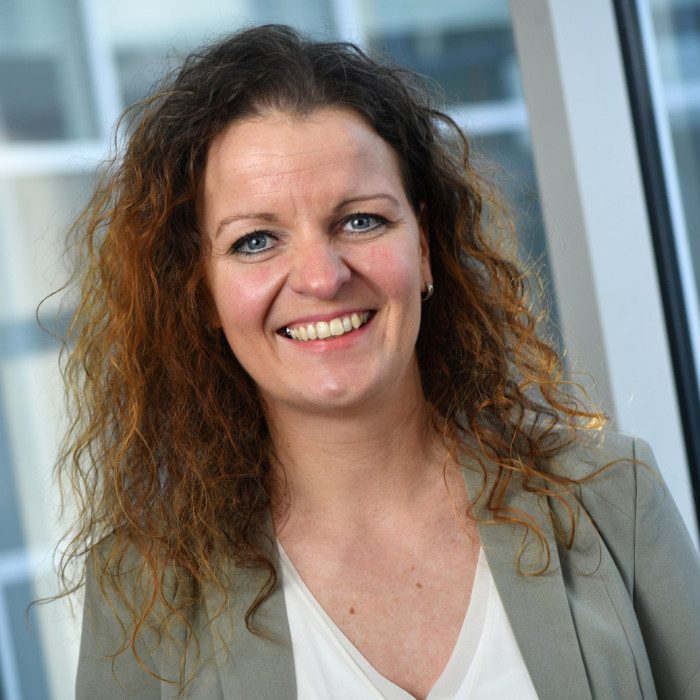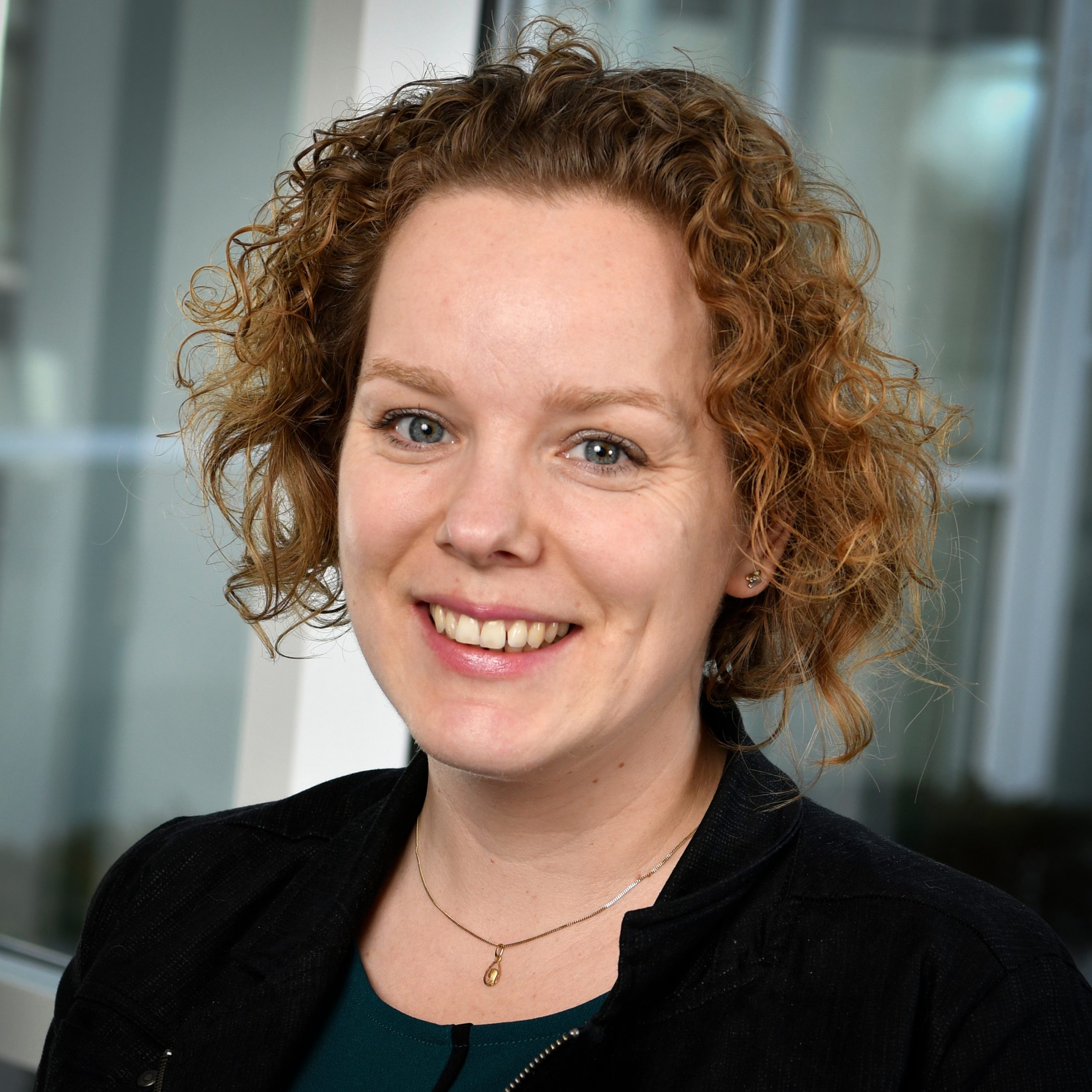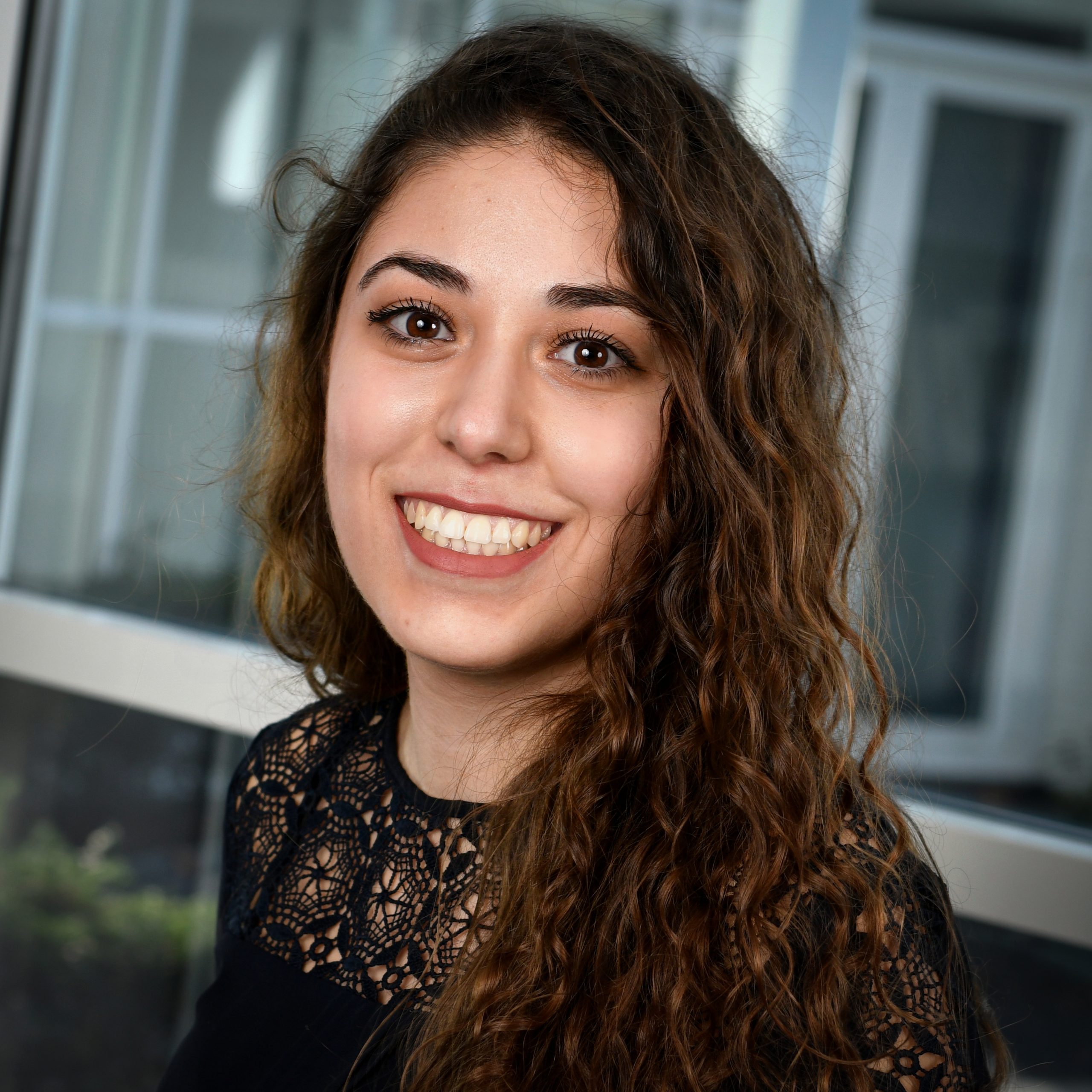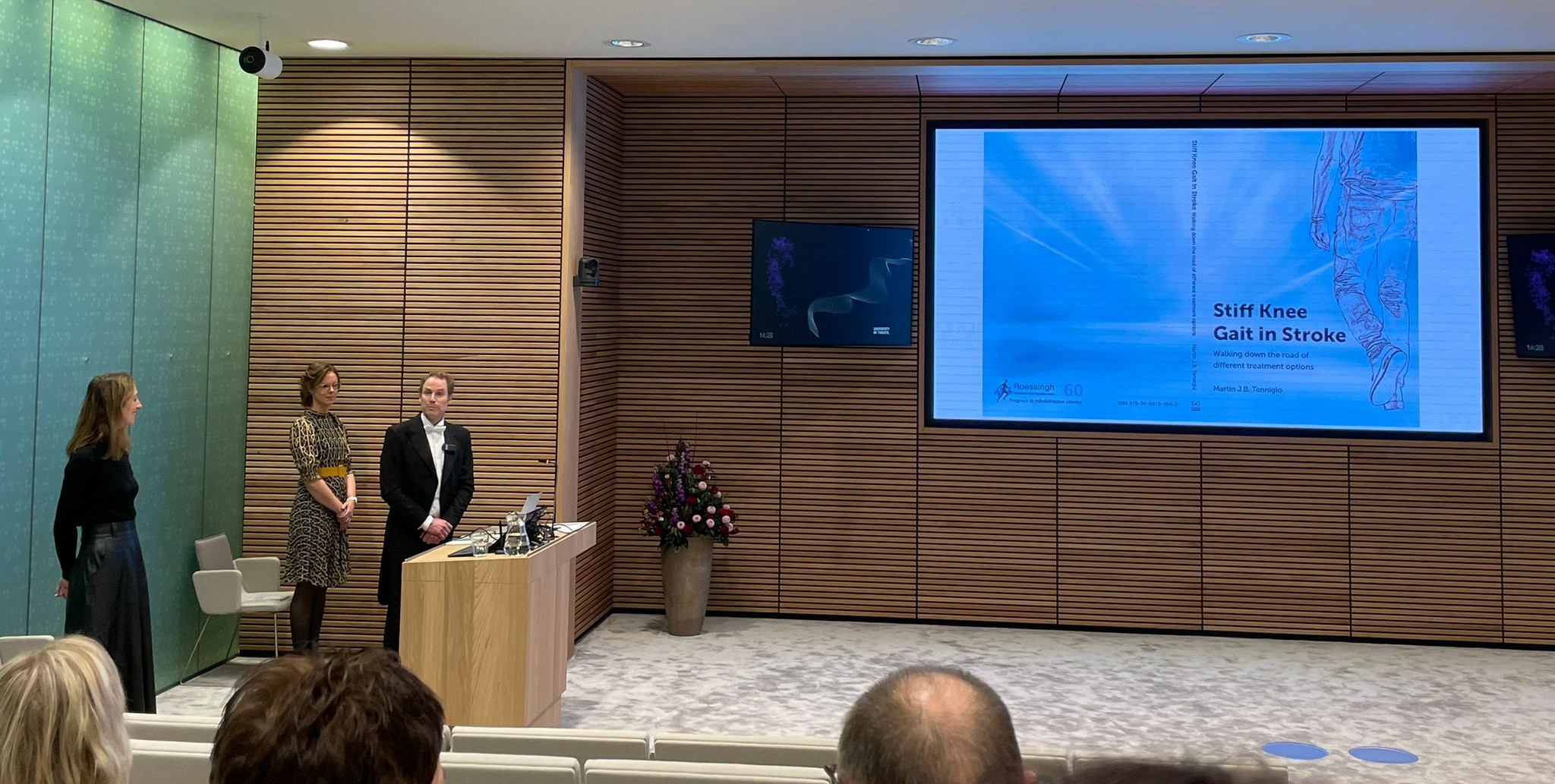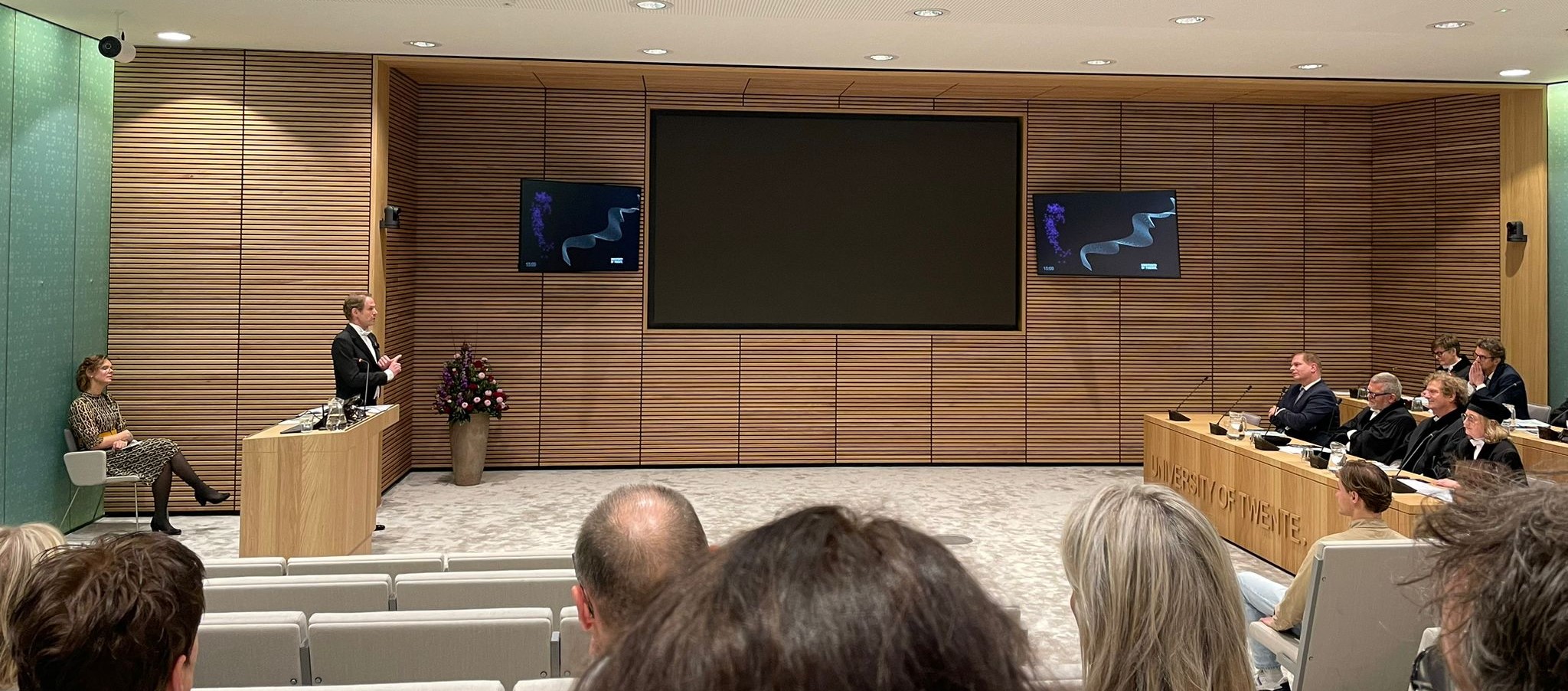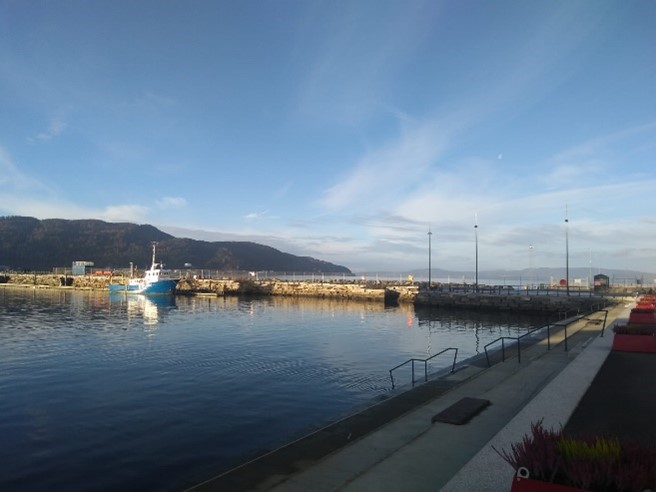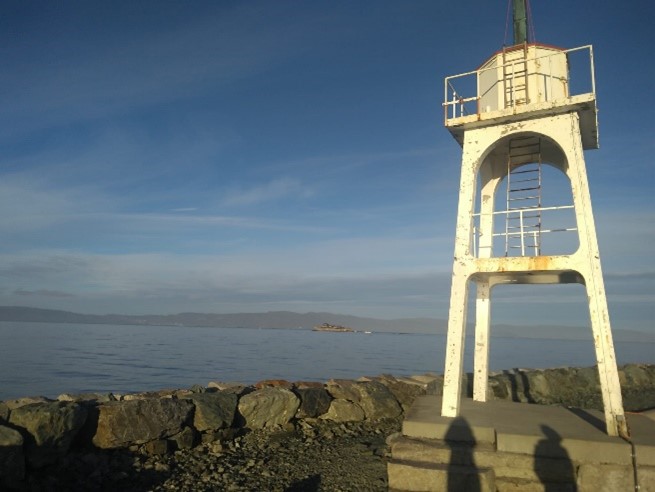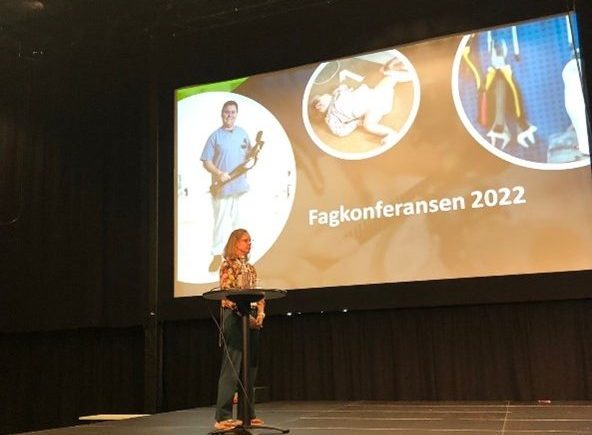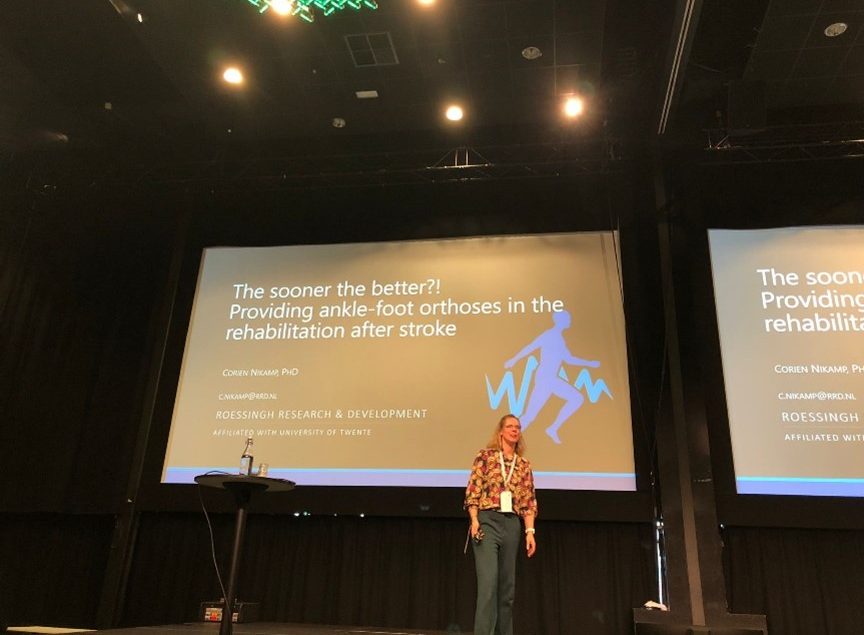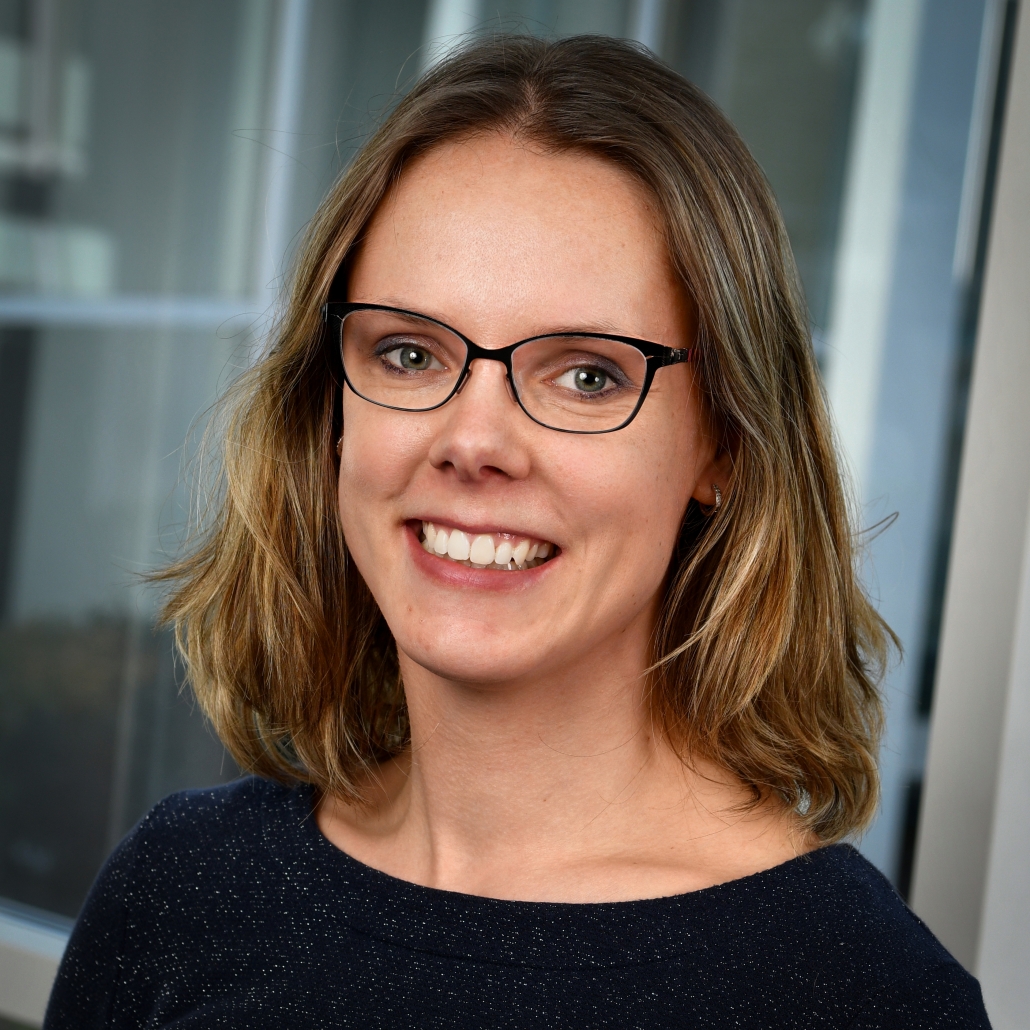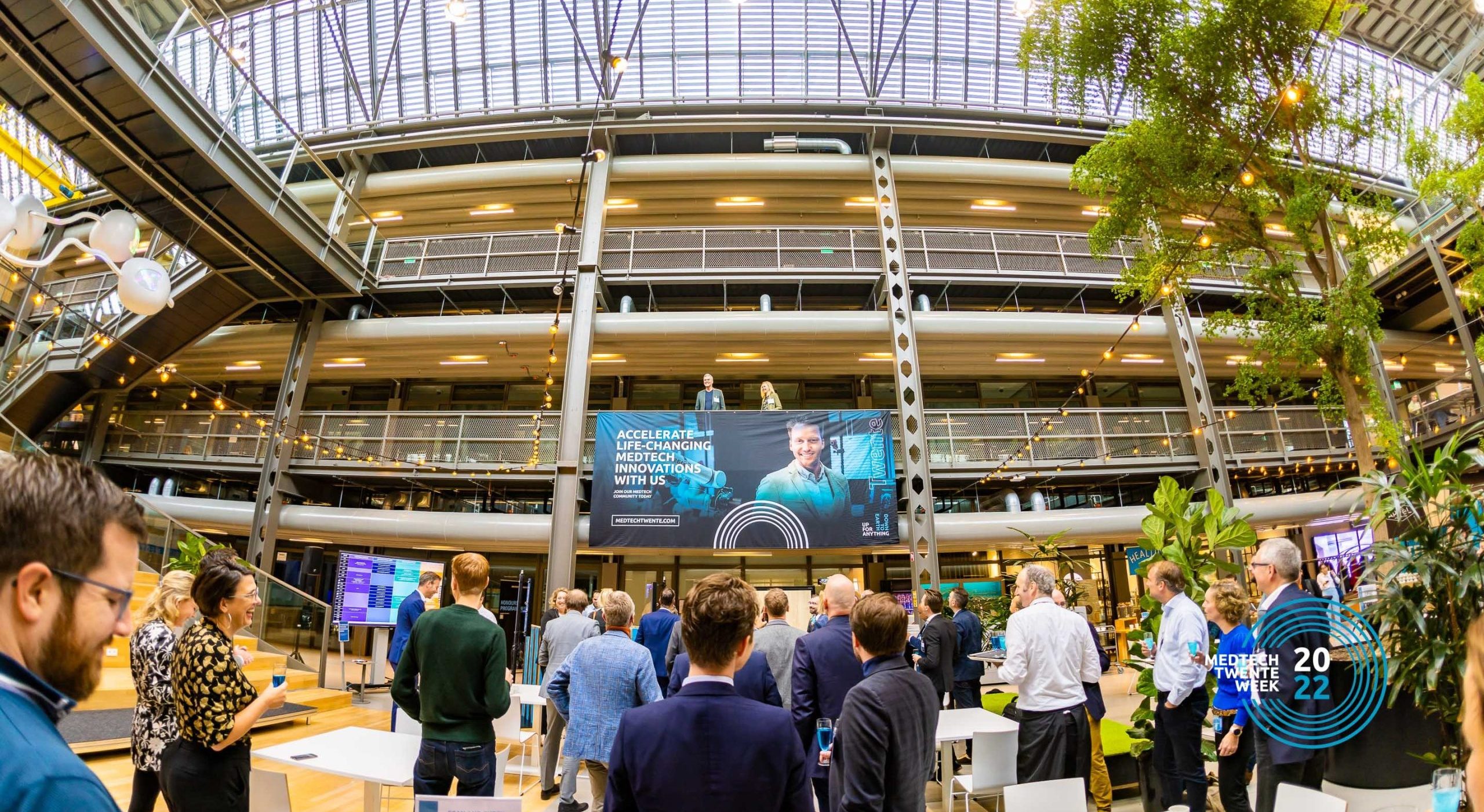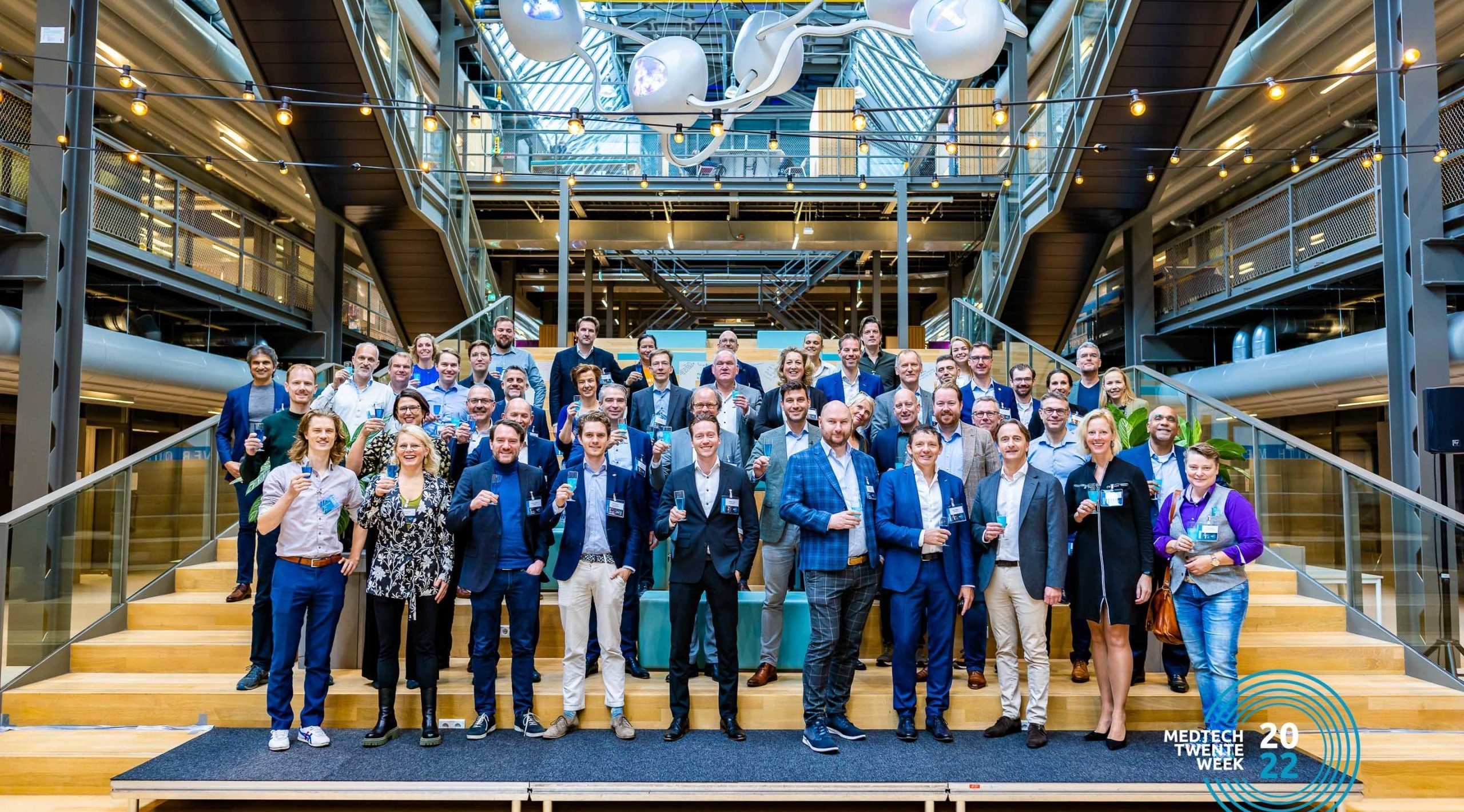Written by: Christiane Grünloh, Stephanie Jansen-Kosterink, Marian Hurmuz
Five groups of students from the bachelor’s programme Creative Technology (CreaTe) at the University of Twente (UT) came up with creative solutions to solve issues from rehabilitation practice during the Remote Care Nearby course!
We offer the course Remote Care Nearby for several years now. Researchers Christiane Grünloh, Stephanie Jansen-Kosterink and Marian Hurmuz teach and supervise these students. From Roessingh, Centre for Rehabilitation, programme coordinator innovation Ina Flierman and rehabilitation physician Reinout van Vliet are involved. In April, the students completed the course. During their final lecture, they pitched their solution within the rehabilitation centre Roessingh.
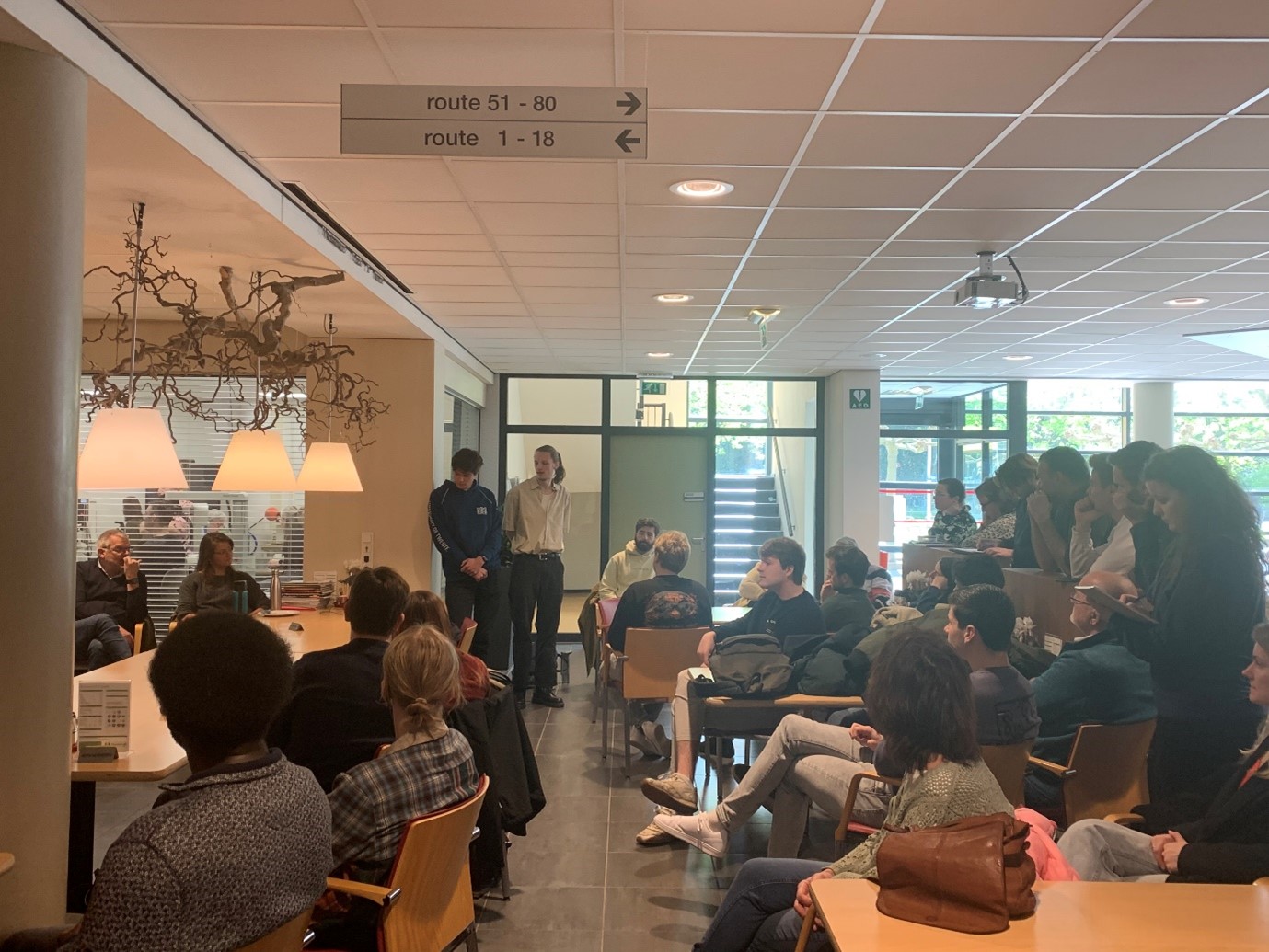
The students worked together with (former) patients of Roessingh, who were each allowed to propose a practical challenge. The students' assignment was to work with these persons to explore this challenge in depth and find out the actual problem behind it, and then come up with a solution with the help of technology. Prototypes were developed, on which patients could give their opinions and which were tested with patients. The results of these user tests were then fed into a new version of a prototype, leading to a final version which was pitched.
Group 1: The Blank-AID
It is very annoying when you wake up at night, have it too hot and can't get the blanket down a bit yourself. Or when it has cooled down and you keep having to wake up your partner to help you with the blanket. When the person asked “How can I make sure I don't have to ask my partner to pull my blanket up or down during the night?”, this group came up with the following idea: rings are made on the duvet cover, through which hooks with ropes are attached. These are attached to two small motors, which can move the blanket up and down. Because arm/hand function can be too impaired, the choice was made not to operate with a button, but with a touch sensor. This makes it very user-friendly for many disabilities and conditions.
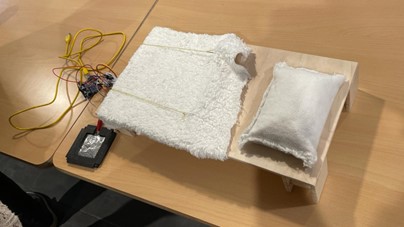
The students created a video showcasing their progress when developing the prototype. Click here to watch this video!
Group 2: Brei-De-Hand (Knit-The-Hand)
When your arm/hand function has deteriorated to the extent that you can no longer perform your hobby of knitting, it takes away some of the joy of life. This person's question was much broader at first, namely “The problem I am facing is that I can only use my left (lower) arm, especially my left hand, to a very limited extent. This is occasionally difficult for balance (catching) and it limits me in certain activities I liked to do.” In discussions with the students, who were tasked with properly defining the problem, it emerged that her question was, “How can I continue to perform my hobby of knitting with a deteriorated arm/hand function?”. The solution the students came up with was the Brei-De-Hand. A band that goes around the upper arm, where you insert the back of the knitting needle to keep it in the right place. In addition, a wooden support, which can be attached with one hand, on which the centre of the knitting needle rests.
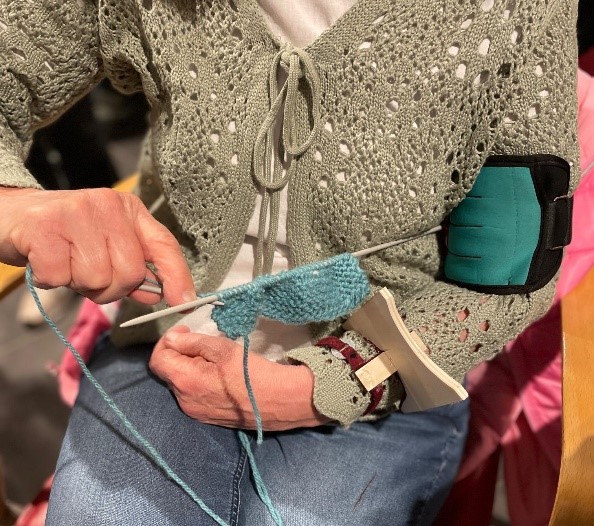
The person already has this prototype in use and is enjoying immensely the fact that she can now knit again
“Over the past few months, I was lucky enough to take part in a project in which a group of UT students were able to come up with a solution to a problem I faced after my brain infarct. From the ‘problems’ I had indicated, my students came up with a solution for no longer being able to knit, which is one of my biggest hobbies. The whole process lasted 10 weeks and I enjoyed it SO much! The students were enthusiastic, sweet and it worked: I can knit again - with one hand! I super enjoyed taking part in this project and not just because I can knit again, I would do it again in a heartbeat.”
The students were also very pleased that they could deliver a prototype that can be used, as one of the students points out:
“Over the past few weeks, I have been working with 5 other students from the University of Twente on a project for Roessingh, Centre for Rehabilitation. Right from the start, we were very motivated to find a solution to the problem that was presented. It was incredibly nice to work with this person and to see that she also enjoys this project so much. After many adjustments, the prototype has been tuned to her and she can finally knit again! This outcome is better than we as a group could have hoped for and it has given us great satisfaction to see that we have been able to help her further.”
Group 3: Rehapp
The mental piece is incredibly important during rehabilitation. This person became very frustrated because he thought he was making little progress. He did not have a good picture of his new normal and could not compare, so he did not see how well he was actually doing. His question was therefore “How can I gain more insight into my progress so that I don't become demotivated?” The students came up with the idea of an app, in which persons can create activities, such as walking for 5 minutes. Each time they perform the activity, they keep track of their progress like a diary. Here, they can use text, media, but also emojis to indicate their mood. Through a graph, the app clearly shows the progress of the rehabilitation. By sharing this with friends and family, they can also start the conversation when it appears that the person is less satisfied or not feeling well.
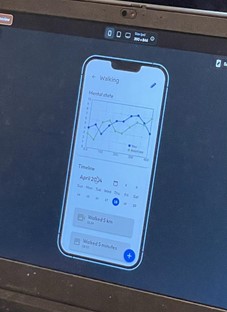
Group 4: Hoist tillift
“How can I lift my daughter out of the wheelchair and into the wheelchair with a lift that I can take to appointments?” A good question, as the current folding lift was heavy, large and inconvenient. The students came up with a smaller version, made of lightweight material, that can offer much more freedom. With small wheels attached to an extra footrest, which can be applied to all kinds of wheelchairs via an adapter, the wheelchair remains well balanced and does not become top-heavy. The lift can lift as much as a maximum weight of 150 kilos, making it also suitable for adults.
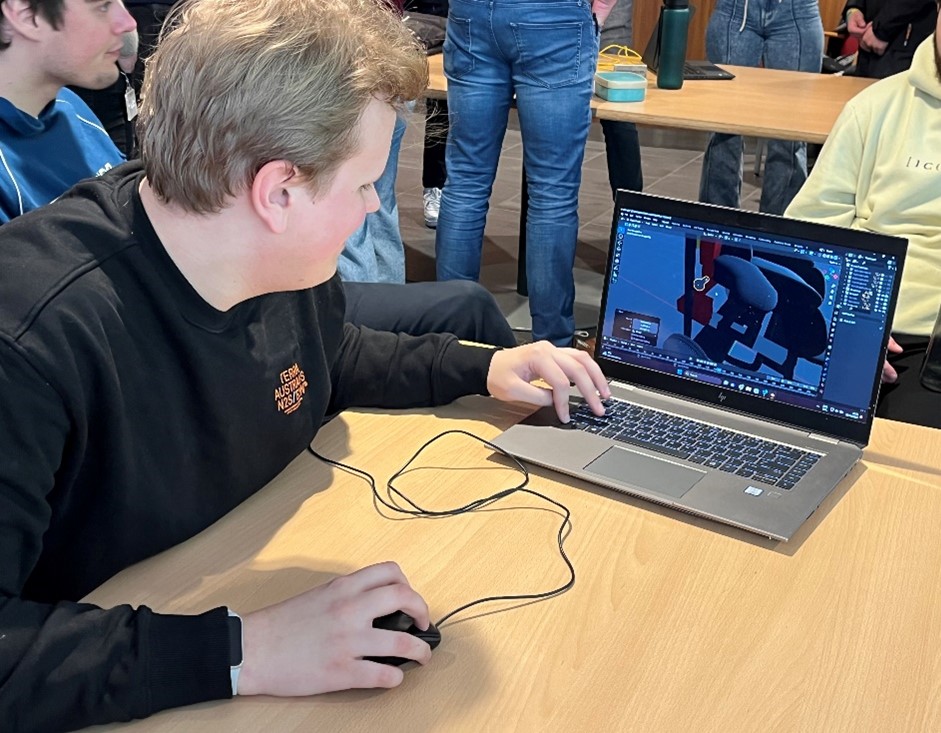
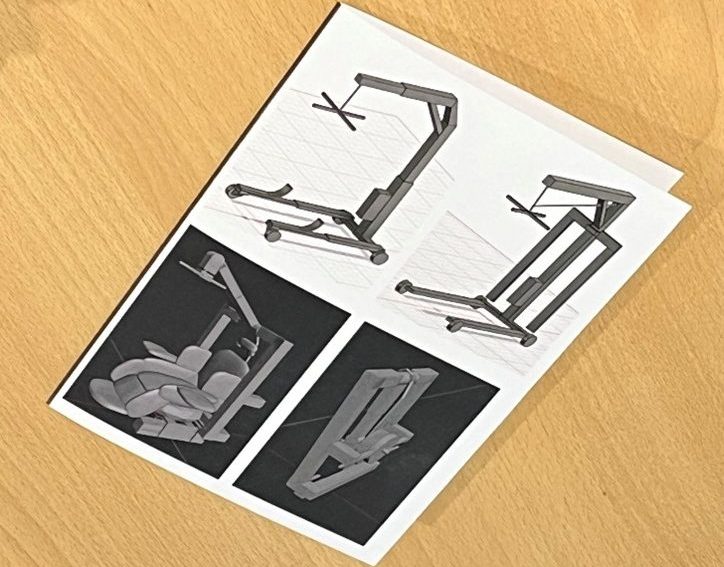
Group 5: Hoop
This person with ALS still enjoys cycling tremendously every day, about 20 kilometres a day in a modified tricycle. Because with ALS, the strength in the muscles keeps decreasing, this also brings more and more challenges. The question the students started working on is “How can I get from my wheelchair to my tricycle independently?” For this, they came up with Hoop. A kind of half hoop, attached to the ceiling in a rail. The person places their wheelchair on the designated spot. Hoop then comes over the person from above, where he just attaches his arms over the hoop. A resting moment is built in and then the device slowly rises. The person can then step with the Hoop to reach the desired spot. This replaces the rollator, making less demands on the muscular strength of the arms. Independence is the most important factor here.
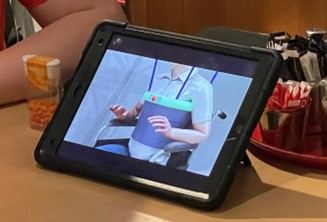
We are very proud of what the students learnt during Remote Care Nearby and, of course, what they delivered. The cooperation between students and a person with a need for help has, as far as we are concerned, but also as far as the students are concerned, a major added value to the course! Are you interested in combining a study subject with care practice and looking for help with this? Get in touch with us!
